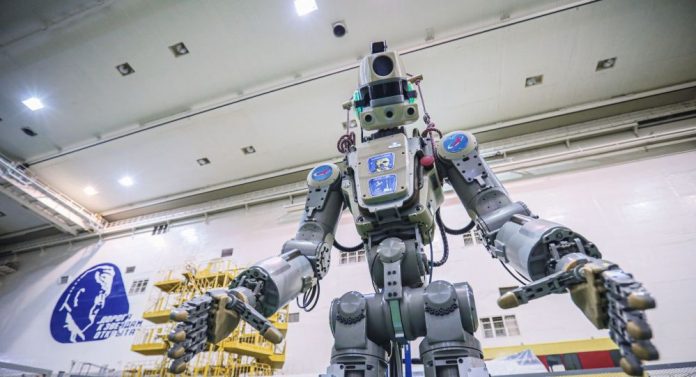A human-sized robot named Fedor which stands for Final Experimental Demonstration Object Research was recently launched with the motive of sending it to space, by Russia when it launched an unmanned rocket, Soyuz. This robot was launched from Russia’s Baikonur cosmodrome in Kazakhstan on the 22nd of August.
The robot is said to spend 10 days aboard the ISS (spacecraft) where it will practice skills like using tools in the correct manner and ways to fix various problems that are likely to arise. The robot is one meter and 80 centimetres in height and weighs 160 kilograms. It is expected to perform the tasks of astronauts like going on a spacewalk, especially on missions which are not suitable for the survival of human beings.
Fedor, very human-like, has its own Instagram and Twitter handle that shows the various human functions it can perform like that of opening a bottle of water. Fedor, as reported by the media sources, is said to copy human actions that help astronauts or other people to carry out certain tasks. Fedor is developed with the potential of operating in high radiation environment dangerous for humans, de-mining and tricky rescue missions.
The tasks are going to be carried out by Fedor are going to be supervised by cosmonaut Alexander Skvortsov on behalf of ISS (International Space Station). Fedor is the first-ever humanoid robot developed by Russia to be sent up to space.
During the launch, Fedor was well seated in the pilot’s seat in the Soyuz rocket and a small Russian flag was placed in its hand. The robot was also functioned to say “Let’s go let’s go”, a phrase known to be said by the man named Yury Gagarin., who was the first human to enter space.
It is interesting to know that Fedor is not the first robot to be sent in space. Previously, in 2011 NASA had developed and sent a humanoid robot named Robonaut 2, with a similar motive of working in a high-risk environment. It was flown back to Earth in 2018 due to some technical errors. Japan too sent a robot called Kirobo in 2013 which could hold conversations in the Japanese language. It was sent along with ISS’s first Japanese space commander.




























